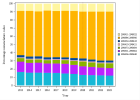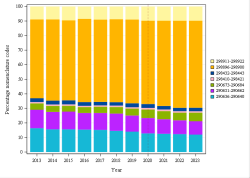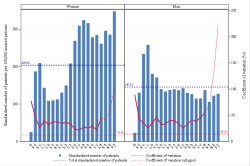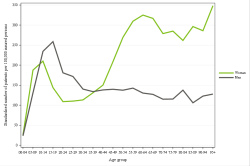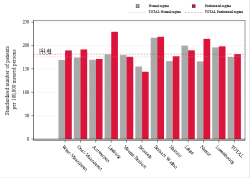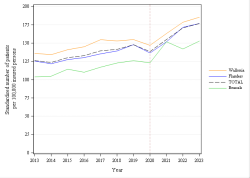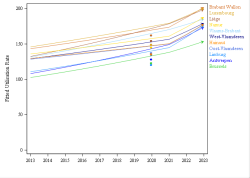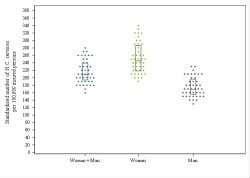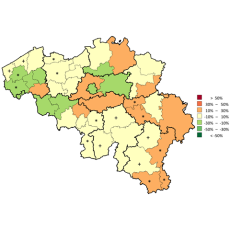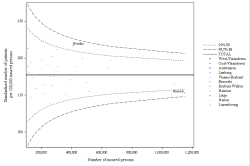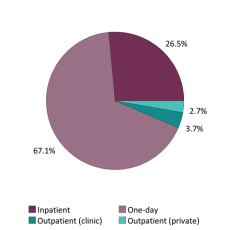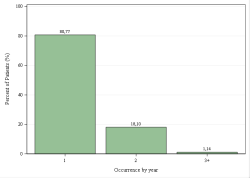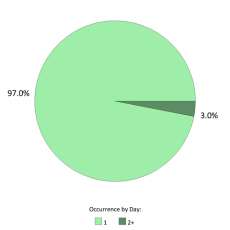Key figures
On this table, when a statistical test has been performed, the data showing a significant difference is displayed on a yellow background, otherwise on a grey background.
The geographical dispersion marker Δ shows the result of comparing the coefficient of variation (CV) of the indicator with the median (MED) of the CVs of all analyses for this indicator: δ if CV > MED + 10%, δδ if CV > MED + 20%, δδδ if CV > MED + 30% (Exception: For median age, δ means CV > MED + 30%).
Data
NIHDI nomenclature codes selected for analysis
| CODES | LABEL | CREATION | DELETION |
| 290636-290640 | Traitement sanglant des fractures malléolaires : Uni-malléolaire | 01-04-1985 | |
| 290651-290662 | Traitement sanglant des fractures malléolaires : Bi-malléolaire | 01-04-1985 | |
| 290673-290684 | Traitement sanglant des fractures malléolaires : Tri-malléolaire | 01-04-1985 | |
| 298410-298421 | Fracture unimalléolaire | 01-04-1985 | |
| 298432-298443 | Fracture bi- ou trimalléolaire | 01-04-1985 | |
| 298896-298900 | ° Fracture unimalléolaire | 01-04-1985 | |
| 298911-298922 | ° Fracture bi- ou trimalléolaire | 01-04-1985 |
The codes mentioned above can be used in rates and expenses, or only in expenses. We invite you to consult the full report for more information.
Below is a graph showing the evolution of the breakdown by volume of nomenclature codes used for the rates:
Population selection
No selection
Analysis period
2024
Graphics
Comments
WE ARE INTERESTED IN YOUR OPINION
Do you have any experience in this area ? We listen to you !
